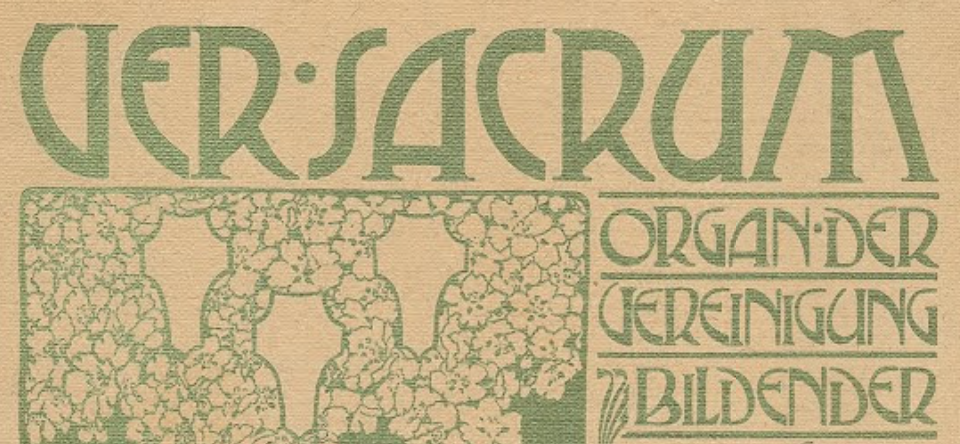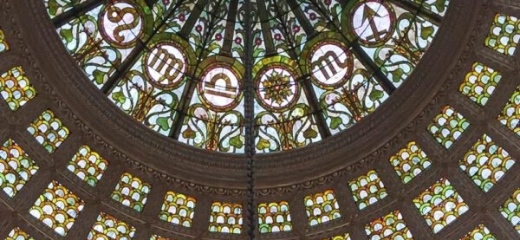Introduction
Art Nouveau, also known as “New Art,” was a movement that emerged in Europe at the end of the 19th century. It was a reaction against the Industrial Revolution and the mass-produced goods that it produced. Instead, Art Nouveau sought to create unique, handcrafted objects that were both beautiful and functional.
Art Nouveau was characterized by its use of flowing, organic lines, intricate patterns, and motifs inspired by nature. This style was applied to a wide range of art forms, including architecture, furniture, ceramics, glassware, and graphic design.
The movement originated in Europe, particularly in France and Belgium, but quickly spread throughout the continent and beyond. Art Nouveau was a major influence on the decorative arts, and it paved the way for other design movements such as Art Deco and the Arts and Crafts movement.
Presently, Art Nouveau is still admired for its beauty and elegance, and it remains a popular style in the world of design. Its influence can be seen in contemporary design, particularly in the use of natural forms, ornate patterns, and decorative elements.
Art Nouveau’s influence on design
Art Nouveau’s influence on the world of design has been far-reaching and enduring. During its heyday in the late 19th and early 20th centuries, the movement had a significant impact on the decorative arts, inspiring a new generation of designers to create beautiful and innovative objects that were both functional and aesthetically pleasing.
One of the ways in which Art Nouveau influenced the world of design was by inspiring other movements that followed it. For example, the Art Deco movement of the 1920s and 1930s drew heavily on Art Nouveau’s use of decorative elements and ornate patterns, while the Arts and Crafts movement, which emerged in the late 19th century, was similarly influenced by Art Nouveau’s emphasis on handmade, artisanal objects.
Art Nouveau’s emphasis on natural forms and materials has also had a lasting impact on modern design. The movement rejected the industrialization and mass production that characterized the late 19th century, instead championing the use of natural materials and organic forms. Today, designers continue to draw inspiration from Art Nouveau’s emphasis on natural materials such as wood, stone, and glass, as well as its use of curves and asymmetry in design.
Finally, Art Nouveau’s use of ornate decoration and complex patterns has also informed contemporary design aesthetics. From fashion to interior design, many contemporary designers have embraced the movement’s emphasis on intricate and decorative elements, using them to add a sense of whimsy and romance to their work.
All in all, Art Nouveau’s influence on the world of design has been significant and enduring. From inspiring other design movements to informing contemporary design aesthetics, the movement’s legacy continues to be felt today. Its emphasis on natural forms and materials, ornate decoration, and intricate patterns has left an indelible mark on the world of design, and it remains an important and beloved movement in the history of art and design.
Art Nouveau’s role in architecture
Art Nouveau had a significant impact on architecture, and its influence can still be seen in buildings around the world today. The movement sought to break away from the strict and often rigid designs of the past, and instead embraced organic forms and natural motifs in architectural design.
One of the most iconic Art Nouveau buildings is Victor Horta’s Hôtel Tassel in Brussels. Completed in 1893, the building is characterized by its use of wrought iron, glass, and natural stone, as well as its ornate decoration and flowing, organic lines. The building was designed as a total work of art, with every aspect of the interior and exterior carefully considered in the design process.
In addition to Horta’s Hôtel Tassel, other notable Art Nouveau buildings include the Casa Batlló and Casa Milà by Antoni Gaudí in Barcelona, as well as the Hotel Métropole in Brussels, and the Majolikahaus in Vienna. These buildings all showcase the movement’s characteristic use of natural forms, decorative elements, and organic lines in architectural design.
Today, Art Nouveau continues to influence architecture, particularly in the use of decorative elements and ornate patterns. Many contemporary architects have incorporated Art Nouveau motifs into their designs, using them to add a sense of whimsy and elegance to their buildings. For example, the Frank Gehry-designed Fondation Louis Vuitton in Paris features a glass and steel design that evokes the organic lines and flowing forms of Art Nouveau.
To recapitulate, Art Nouveau played a significant role in the development of architectural design, and its influence can still be seen in buildings around the world today. Its emphasis on organic forms, natural motifs, and ornate decoration has inspired architects to create beautiful and innovative buildings that continue to captivate and inspire us.
Art Nouveau and the decorative arts
Art Nouveau had a profound impact on the decorative arts, inspiring a new generation of designers to create beautiful and innovative objects that were both functional and aesthetically pleasing. The movement embraced natural forms and motifs, and designers used a range of materials, including wood, glass, ceramics, and textiles, to create pieces that were both ornate and functional.
One of the most notable Art Nouveau designers was Émile Gallé, whose work in glassware and furniture design remains highly regarded today. Gallé was known for his use of intricate floral motifs and his innovative techniques in glass blowing, which allowed him to create pieces that were both delicate and highly ornate.
Another important Art Nouveau designer was Louis Comfort Tiffany, who was best known for his stained glass creations. Tiffany’s use of color and intricate patterning was highly influenced by the Art Nouveau movement, and his work remains highly sought after by collectors and enthusiasts today.
René Lalique was another important Art Nouveau designer, known for his use of glass and his intricate jewelry designs. Lalique’s work was characterized by its use of natural forms and motifs, including flowers and insects, and his pieces were highly ornate and decorative.
Nowadays, Art Nouveau-inspired designs continue to be popular in contemporary home decor. From furniture to textiles to lighting fixtures, many designers continue to draw inspiration from the movement’s emphasis on natural forms and organic motifs. Art Nouveau-inspired designs can be found in a range of styles, from highly ornate and decorative pieces to more streamlined and minimalist designs.
In a nutshell, Art Nouveau’s influence on the decorative arts has been significant and enduring. From Émile Gallé’s glassware to Louis Comfort Tiffany’s stained glass creations to René Lalique’s jewelry designs, the movement inspired a new generation of designers to create beautiful and innovative objects that continue to captivate and inspire us today.
Art Nouveau and graphic design
Art Nouveau had a significant impact on graphic design, particularly in the areas of poster design and typography. The movement’s emphasis on organic forms, flowing lines, and natural motifs inspired a new generation of designers to create visually stunning and innovative graphic designs.
One of the most notable Art Nouveau graphic designers was Alphonse Mucha, whose iconic posters for the actress Sarah Bernhardt captured the movement’s ornate and decorative style. Mucha’s use of sinuous lines, floral motifs, and ornate typography became synonymous with the Art Nouveau movement, and his work remains highly regarded today.
Another important Art Nouveau graphic designer was Aubrey Beardsley, whose intricate and highly stylized illustrations were highly influential in the development of Art Nouveau-inspired graphic design. Beardsley’s work was characterized by its use of black and white, highly detailed line work, and erotic subject matter.
In current era, Art Nouveau-inspired designs continue to be used in contemporary advertising and branding. The movement’s emphasis on organic forms and natural motifs has been particularly influential in the development of eco-friendly and sustainable brands, as well as in the development of brands that emphasize their connection to nature.
To sum up, Art Nouveau had a significant impact on the development of graphic design, particularly in the areas of poster design and typography. The movement’s emphasis on organic forms, natural motifs, and flowing lines inspired a new generation of designers to create visually stunning and innovative graphic designs that continue to influence contemporary advertising and branding.
Conclusion
Art Nouveau was a highly influential movement that had a profound impact on the design world, both during its heyday and in the years since. The movement’s emphasis on organic forms, natural motifs, and flowing lines inspired a new generation of designers to create visually stunning and innovative designs that continue to influence contemporary design aesthetics.
One of the most significant ways in which Art Nouveau influenced the design world was through its emphasis on the integration of decorative elements into architecture, furniture design, and the decorative arts. Art Nouveau designers sought to break down the boundaries between art and everyday life, creating designs that were not only beautiful but also functional and accessible to a wider audience.
Art Nouveau also inspired other design movements, such as Art Deco and the Arts and Crafts movement, which built upon the movement’s emphasis on craftsmanship and design excellence. Art Nouveau’s influence on these subsequent movements ensured that its aesthetic continued to be relevant and inspiring long after the movement had ended.
Perhaps the most enduring legacy of Art Nouveau is its ability to inspire contemporary designers to create new and innovative designs that build upon the movement’s principles. From eco-friendly designs that emphasize a connection to nature to furniture designs that incorporate natural forms and materials, Art Nouveau continues to inspire designers to push the boundaries of what is possible and create designs that are both functional and beautiful.
In conclusion, Art Nouveau’s influence on the design world has been profound and enduring, and the movement’s emphasis on natural forms, flowing lines, and organic motifs continues to inspire and influence designers today. Whether through architecture, furniture design, the decorative arts, or graphic design, Art Nouveau’s impact on the design world is sure to continue for many years to come.






